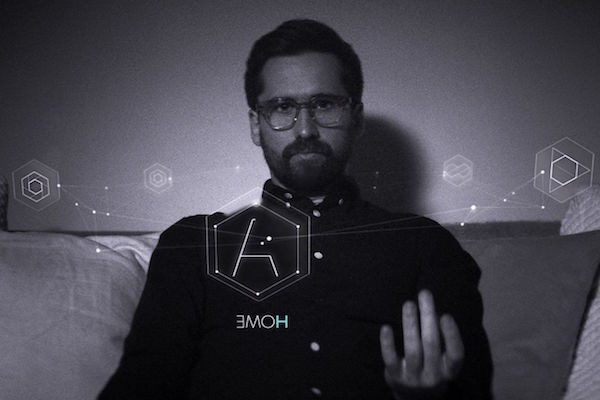
Benjamin Dickinson directs and acts in Creative Control
As The Angry Birds Movie is suicide flapping its way into theaters, it’s probably time to talk about the utter failure of twenty-first century filmmaking to come to terms with the smartphone age. Part of the problem is that smartphone fun stuff, like pleasantly stupid physics games, tweaks a different part of the brain than does a series of well-composed moving images strung together to create a narrative. Movies are meant to invoke dreams, while games involve playing on basic motor skills and hand-eye coordination.
Another part of it is that a person using a smartphone just isn’t very cinematic. While it may feel like there’s a lot going on in our heads when we’re glued to our iPhones, from the outside, it just looks like we’re standing there with our heads down. The social and psychological effects of ubiquitous interconnectedness are ripe fodder for fiction, but it’s really hard to represent these things onscreen. Even the most basic problem of how to show the contents of a text message onscreen still doesn’t have a decent solution. To repurpose a phrase normally applied to music criticism, making movies about the internet is like tap-dancing about architecture.
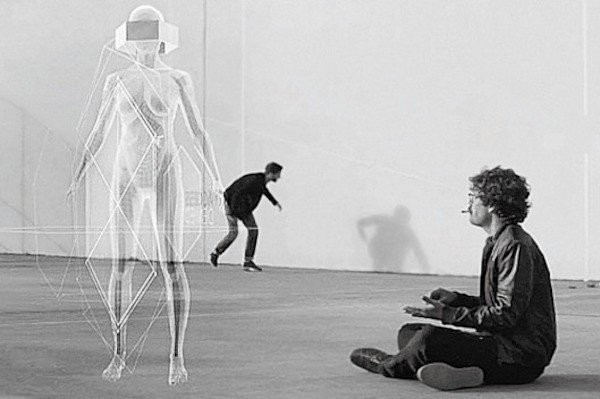
Dan Gill as Wim (foreground)
The works that have actually gotten it right are few and far between. There’s Spike Jones’ 2013 Her, which is in the running for best film of the decade, defaulting to a future where voice commands control everything, thus playing to the strength of film. That same year, Andrew Bujalski’s Computer Chess tackled the psychology of the age of computing by going back to its beginnings in the early 1980s, and using period-appropriate tube video cameras to create a gloriously gooey, black-and-white mess onscreen. Director Benjamin Dickinson’s new film Creative Control bears the clear marks of both of his successful predecessors, and brings plenty of new ideas along to the party.
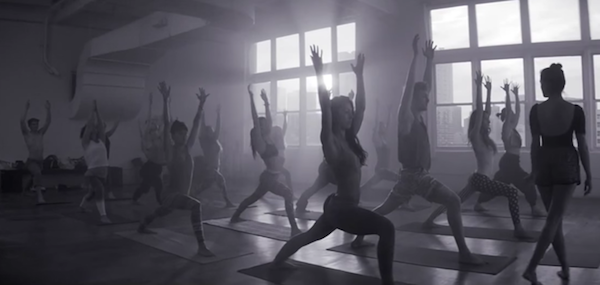
Cinematographer Adam Newport-Berra creates some eye-popping images.
Dickinson himself stars as David, an ad exec in a near-future Brooklyn that’s pretty much like present-day Brooklyn, only more so. The phones now look like transparent blocks of Lexan, and the interfaces are totally Minority Report, but the scene is still full of hard-partying young go-getters whose income level and coolness seem correlated in some way obscure to outsiders. His live-in girlfriend is Juliette (Nora Zehetner), a beautiful yoga instructor who is having a crisis of namaste, as she begins to see the cranky, self-serving interiors behind her co-worker’s passive-aggressively peaceful exteriors.
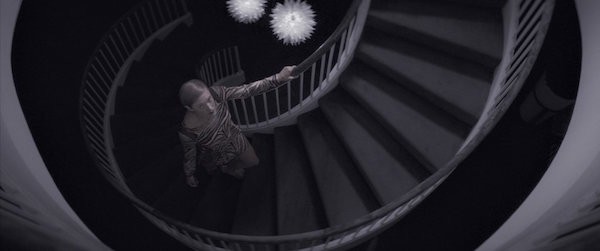
Alexia Rasmussen as Sophie
But David takes little notice of his relationship fraying at the seams, because he’s too busy popping stylishly pill-pressed research chemicals with his photographer buddy Wim (Dan Gill), who apparently lives on the set of Antonioni’s Blow-Up. But things are going pretty good for him at work: He’s been given full creative control to create the campaign for his ad agency’s newest and biggest client, Augmenta, which is rolling out new glasses with onboard augmented reality, overlaying information displays on top of the images of its user’s real world. The star of his revolutionary new augmented reality ad campaign is musician/comedian Reggie Watts, playing his own weird self, because if Reggie Watts didn’t exist, he would have to be invented.
But just as he’s getting used to the new augmented reality glasses, he develops a crush on one of Wat’s many girlfriends, Sophie (Alexia Rasmussen), and soon he is channeling his forbidden urges into building a simulation of Sophie inside the virtual world of his glasses. The pills, booze, coke, and addictive virtual worlds erode David’s consciousness, and the lines between fantasy and reality blur for him until he—and we—aren’t sure whether he’s having an affair or not.
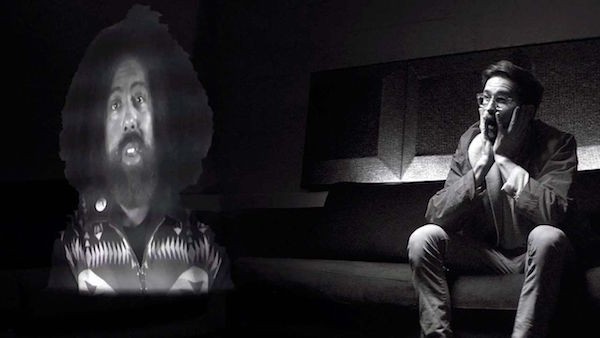
Virtual Reggie Watts would have to be invented if he didn’t already exist.
Dickinson and his cinematographer Adam Newport-Berra’s black and white images reference Computer Chess, but where Bujalski wanted to muddy a sharp reality, Creative Control wants to make things hyper-real. The color shading drifts subtly from high contrast and desaturated to different muted bitonal schemes that mirror the mood they’re trying to set. With references to Eyes Wide Shut, A Clockwork Orange, and Dr. Strangelove, Dickinson sometimes seems to be trying to remake all of his favorite Kubrick films at once. Creative Control is a parade of one striking image after another, but almost everything is done in-camera, with the CGI limited to the augmented reality information layer.
The darkly hilarious Creative Control has too many ideas and too many homages to stuff into 90 minutes, but Dickinson and his collaborators are clearly having a great time trying. The movie sputtered in theatrical release, but it was quickly snatched up by Amazon and is now being featured on their streaming video service. Dickinson may be too in thrall of his influences now, but he is a talent to watch, and Creative Control is unlike anything else you’ll see this year.